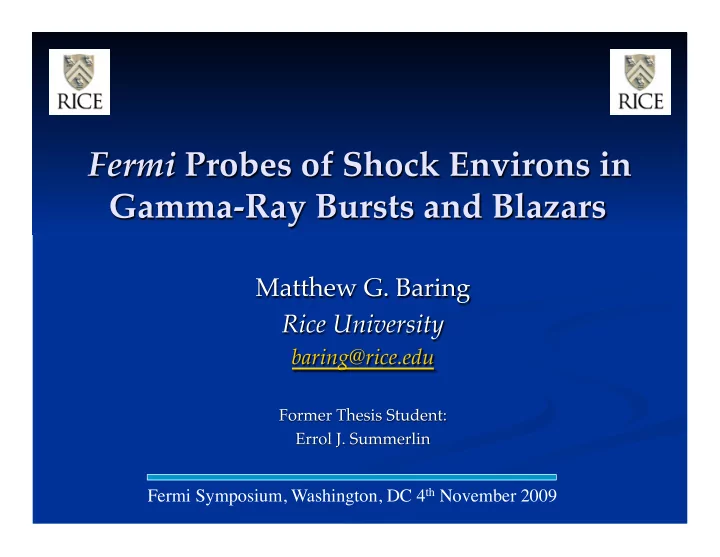

Fermi Symposium, Washington, DC 4 th November 2009
Abdo et al. (2009) z=0.116 HBLs vs. FSRQs; breaks in LAT-band complicate things – e.g. 3C 454.3
Oblique Shock Geometry Normal Incidence Frame (NIF) de Hoffmann-Teller frame (HT)
Superluminal cases ->
Baring & Summerlin 2010, in prep.
Connecting to Source Gamma-ray Observations • Model coupling between particle acceleration index σ for dn/dp α p - σ and observed photon index β (dn γ /d ε γ α ε γ - β ) depends on whether in situ cooling is efficient or not. • Three main possibilities for GRBs and blazars: – Uncooled synchrotron or IC/SSC: β =( σ +1)/2 => σ =2 β -1 – Strongly-cooled synchrotron or IC/SSC: β =( σ +2)/2 => σ =2 β -2 – Uncooled hadronic emission: β ~ σ • => Great diagnostics potential in Fermi era! • E.g. for GRBs when 2< β <2.2, then 2< σ <2.4 in strongly- cooling scenarios => subluminal/mildly-superluminal shocks, perhaps with strong turbulence. • Several LAT blazars may require subluminal shocks.
Cooled GRB and blazar scenarios require either strong turbulence, or subluminal shocks; For uncooled GRB/blazar synchrotron/IC/SSC emission picture, superluminal shock regime is preferred.
Recommend
More recommend